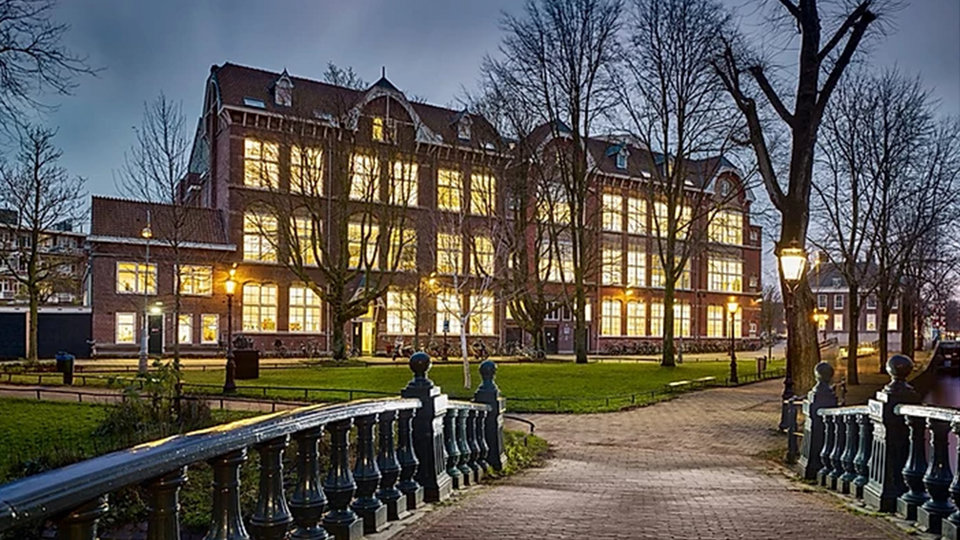To maintain and keep a building in use, interventions are required at certain moments in time. It is usually up to an architect to consider what interventions are to be made. But what purposes do they actually serve? How do actions work out? How satisfactory is the result? The forty Master’s students taking the new MASTERMIND CRASH course, made a game of finding out.
The new course was created by Ana Pereira Roders and the Heritage and Architecture research group. Pereira Roders is Professor of Heritage and Values at the Faculty of Architecture and the Built Environment, and wants to teach the architects and designers of tomorrow to critically and analytically evaluate the impacts of their designs. Especially when they are caring for existing buildings. “Designers in training are traditionally taught that they need to be able to convince others that their design is a good design. Therefore, they tend to emphasise the positive impacts. Or impacts are only assumed but not substantiated by facts. I advocate transparency by assessing the impacts of the design decisions.” Being able to account for both beneficial and less favourable effects of an intervention in the built environment should be inherent in the design process. “Like medicine manufacturers, architects should be able to issue a leaflet that not only includes the expected results, but also the side effects.”
“Like medicine manufacturers, architects should be able to issue a leaflet that not only includes the expected results, but also the side effects.” - Ana Pereira Roders
New uses
According to Pereira Roders, all too often existing buildings are demolished for reasons that, on second thoughts, do not make sense. For the sake of user interests, a more sustainable use of building materials or the preservation of cultural-historical values, it would have been smarter to repurpose these buildings. For the vast majority of the built environment, she says, redevelopment, reuse and even relocation are possible and much more in line with today’s pursuit of a more sustainable lifestyle. “These days, demolishing first in order to start with a clean slate is an obsolete concept. What can we do with what we already have and how do we deal with it respectfully? That should be the starting point.”
She finds it a wasted opportunity that designers experience the conditions of protected heritage as limitations to their creativity. “It is precisely the attached values that challenge the designer to excel and further develop as a professional. If you are not allowed to change the façade, then you can use the roof or the interior to upgrade the building. That's your job. Architects have the creativity to do it”. Conversely, removing a piece of masonry from a building with a long history may not be desirable from a cultural historical point of view, but the intervention may suddenly make a space usable. Moreover, this masonry can be reused elsewhere in the building. So, revitalizing old buildings is a matter of substantiated deliberations. If it is up to Pereira Roders, architecture students should realise that not only the new additions determine the designer's signature, but also what he or she removes or retains. “How to combine the three elements additions, removals and retainments makes it clear what kind of architect you are.”
Interdependent
Based on this conviction, the professor initiated a new master's course, MASTERMIND-CRASH, an acronym for Conservation, Reuse, Architecture, Sustainability and Heritage. Students were instructed to review a completed redesign of an existing building for each of the domains. They were not chosen at random, says Pereira Roders. “Each domain is analogue to an aspect of human life. Conservation stands for health, Reuse for lifestyle, Architecture for DNA. Sustainability reflects the extent to which your actions affect your living environment and Heritage reflects your strengths as appreciated by others. With this approach, during the course, students will conclude that these five domains are interdependent and that an integral consideration is needed to be able to think about which interventions will yield the best results.”
Crashing Codes
Eight teams of five students analysed and assessed a total of eight cases, including Kunstmuseum Den Haag, the Atlas building in Eindhoven, De Buigerij in Hengelo, the Van Nellefabriek in Rotterdam and the building of the Reinwardt Academy in Amsterdam. The course, which started before the Covid-19 pandemic broke out, had taken a form of serious gaming. Similarly to the game Mastermind, the students translate their findings into a colour code. Red, orange, yellow, green and blue indicate the extent to which, according to the student, the redesign contributes to the considered domain. The extent to which the architects responsible for the redesign are involved in the course is particularly special. They can be consulted by the students and in turn assign a colour to the different domains. Pereira Roders: “The intention was to have the student teams and architects reveal their hidden secret codes during a grand finale, like a TV-show. But because of the lockdown, that didn't happen.” However we were able to create a corona-proof variant of the final phase online. “The results of the student teams were published online and the architects explained their colour codes in short videos. As such, the two 'players' virtually came together on a case-by-case study.”
Strengths
Dick van Gameren, Dean of the Faculty of Architecture and the Built Environment was also involved in the course as an architect. Students analysed his design for the apartment complex De Buigerij from 2009. The dwellings were built on a former industrial site of the Stork company in Hengelo. “I feel it is a strong point that students learn to weigh up the consequences between design choices on the basis of a quantitative analysis. And also that they learn to value how much retaining structures which may not be so special in themselves, such as the steel pillars and brick walls of a factory building, can contribute to the identity of a building or site.” However a former warehouse compared to an apartment complex in which only the shell of the warehouse remained proved tricky. “This case may not have been so suitable for the formula of the course.”
Just like De Jonge, Van Gameren sees that more and more design commissions involve existing building stock, both in the Netherlands and abroad. “The curriculum is changing along with this. Take the Bachelor's programme for example, where a few years ago we added much more emphasis to the role of renewing and renovating dwellings. You can see several recent examples in this faculty of teaching and research in which the focus is on the existing. And there will be more and more of these, I think.”
To be continued
Pereira Roders would like to offer a second edition next year. “The coronavirus had an unforeseen impact, but luckily we didn't have to turn everything around. Some students found it difficult to focus on one domain,” she notes. "Collecting a lot of information is often good, but in this case we were looking for focus and depth. We can use the students’ feedback to fine-tune the format. This first edition was a more than successful experiment for both supervisors and students but ended unexpectedly with the lockdown. Next year we will certainly end the course differently, but just how will remain a surprise.”
Learn more here about all the other projects, students, tutors and architects who joined this first edition of the MASTERMIND CRASH course.


